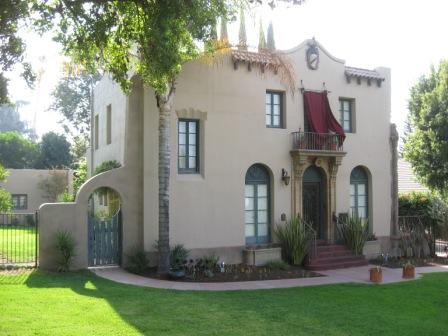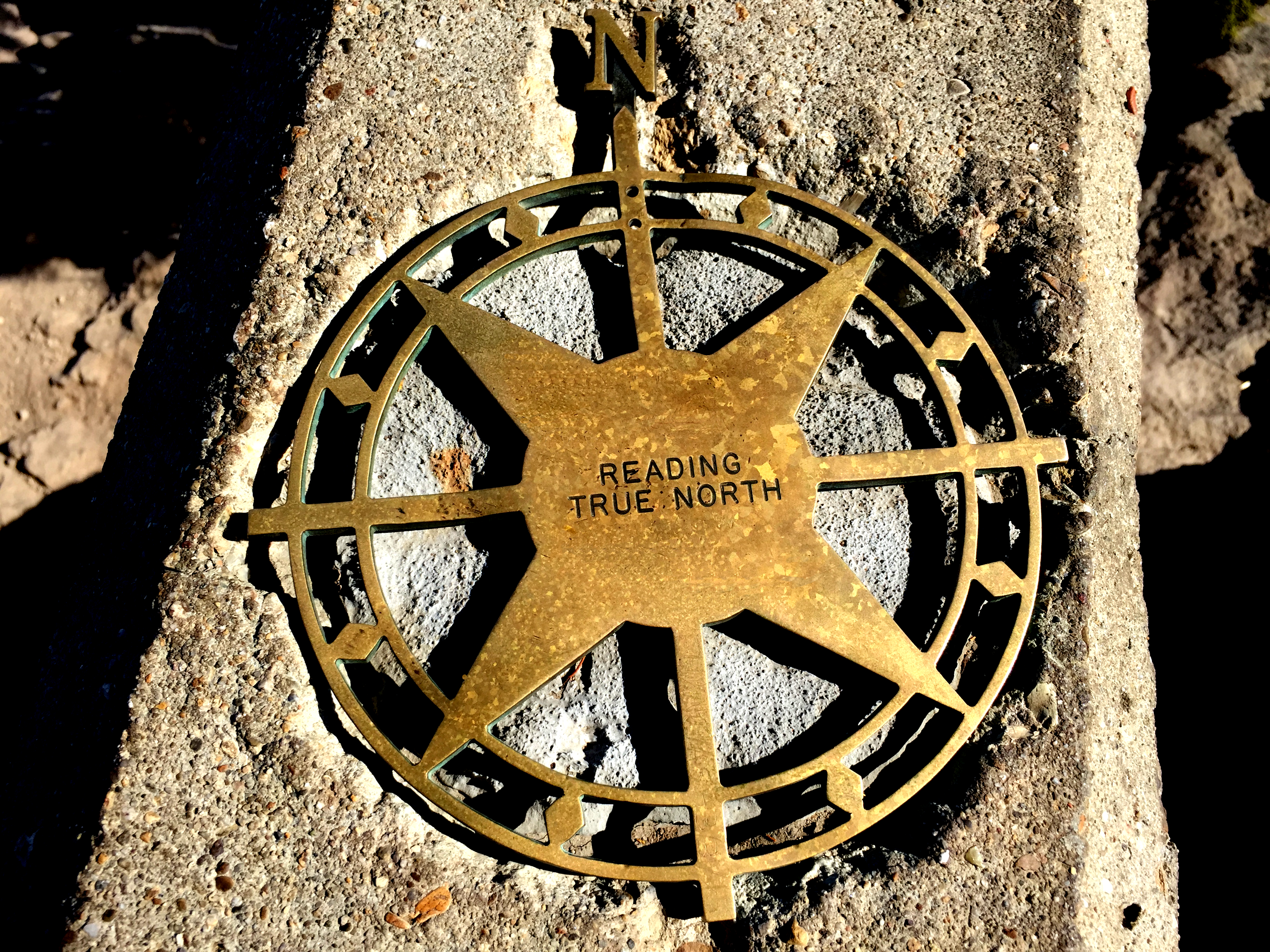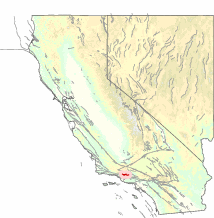|
1991 Sierra Madre Earthquake
The 1991 Sierra Madre earthquake occurred on June 28 at with a moment magnitude of 5.6 and a maximum Mercalli intensity of VII (''Very strong''). The thrust earthquake resulted in two deaths, around 100 injuries, and damage estimated at $33.5–40 million. The event occurred beneath the San Gabriel Mountains on the Clamshell–Sawpit Fault, which is a part of the Sierra Madre–Cucamonga Fault System. Instruments captured the event at a number of strong motion stations in Southern California. Preface Due to its history of generating great earthquakes (1857, 1906) the focal point of earthquake hazard assessment in California has been the strike-slip San Andreas System of faults. However, a system of faults, including the Sierra Madre–Cucamonga Fault System that runs along the border of the San Gabriel and San Fernando Valleys, has also caused a series of moderate to large events in the Greater Los Angeles Area. The westernmost portion of this fault system ruptured in 1971 a ... [...More Info...] [...Related Items...] OR: [Wikipedia] [Google] [Baidu] |
Peak Ground Acceleration
Peak ground acceleration (PGA) is equal to the maximum ground acceleration that occurred during earthquake shaking at a location. PGA is equal to the amplitude of the largest absolute acceleration recorded on an accelerogram at a site during a particular earthquake. Earthquake shaking generally occurs in all three directions. Therefore, PGA is often split into the horizontal and vertical components. Horizontal PGAs are generally larger than those in the vertical direction but this is not always true, especially close to large earthquakes. PGA is an important parameter (also known as an intensity measure) for earthquake engineering, The design basis earthquake ground motion (DBEGM) is often defined in terms of PGA. Unlike the Richter and moment magnitude scales, it is not a measure of the total energy (magnitude, or size) of an earthquake, but rather of how hard the earth shakes at a given geographic point. The Mercalli intensity scale uses personal reports and observations to mea ... [...More Info...] [...Related Items...] OR: [Wikipedia] [Google] [Baidu] |
Thrust Tectonics
Thrust tectonics or contractional tectonics is concerned with the structures formed by, and the tectonic processes associated with, the shortening and thickening of the crust or lithosphere. It is one of the three main types of tectonic regime, the others being extensional tectonics and strike-slip tectonics. These match the three types of plate boundary, convergent (thrust), divergent (extensional) and transform (strike-slip). There are two main types of thrust tectonics, thin-skinned and thick-skinned, depending on whether or not basement rocks are involved in the deformation. The principle geological environments where thrust tectonics is observed are zones of continental collision, restraining bends on strike-slip faults and as part of detached fault systems on some passive margins. Deformation styles In areas of thrust tectonics, two main processes are recognized: thin-skinned deformation and thick-skinned deformation. The distinction is important as attempts to structu ... [...More Info...] [...Related Items...] OR: [Wikipedia] [Google] [Baidu] |
North American Plate
The North American Plate is a tectonic plate covering most of North America, Cuba, the Bahamas, extreme northeastern Asia, and parts of Iceland and the Azores. With an area of , it is the Earth's second largest tectonic plate, behind the Pacific Plate (which borders the plate to the west). It extends eastward to the Mid-Atlantic Ridge and westward to the Chersky Range in eastern Siberia. The plate includes both continental and oceanic crust. The interior of the main continental landmass includes an extensive granitic core called a craton. Along most of the edges of this craton are fragments of crustal material called terranes, which are accreted to the craton by tectonic actions over a long span of time. It is thought that much of North America west of the Rocky Mountains is composed of such terranes. Boundaries The southern boundary with the Cocos Plate to the west and the Caribbean Plate to the east is a transform fault, represented by the Swan Islands Transform F ... [...More Info...] [...Related Items...] OR: [Wikipedia] [Google] [Baidu] |
Pacific Plate
The Pacific Plate is an oceanic tectonic plate that lies beneath the Pacific Ocean. At , it is the largest tectonic plate. The plate first came into existence 190 million years ago, at the triple junction between the Farallon, Phoenix, and Izanagi Plates. The Pacific Plate subsequently grew to where it underlies most of the Pacific Ocean basin. This reduced the Farallon Plate to a few remnants along the west coast of North America and the Phoenix Plate to a small remnant near the Drake Passage, and destroyed the Izanagi Plate by subduction under Asia. The Pacific Plate contains an interior hot spot forming the Hawaiian Islands. Boundaries The north-eastern side is a divergent boundary with the Explorer Plate, the Juan de Fuca Plate and the Gorda Plate forming respectively the Explorer Ridge, the Juan de Fuca Ridge and the Gorda Ridge. In the middle of the eastern side is a transform boundary with the North American Plate along the San Andreas Fault, and a boundary ... [...More Info...] [...Related Items...] OR: [Wikipedia] [Google] [Baidu] |
Thrust Fault
A thrust fault is a break in the Earth's crust, across which older rocks are pushed above younger rocks. Thrust geometry and nomenclature Reverse faults A thrust fault is a type of reverse fault that has a dip of 45 degrees or less. If the angle of the fault plane is lower (often less than 15 degrees from the horizontal) and the displacement of the overlying block is large (often in the kilometer range) the fault is called an ''overthrust'' or ''overthrust fault''. Erosion can remove part of the overlying block, creating a ''fenster'' (or ''window'') – when the underlying block is exposed only in a relatively small area. When erosion removes most of the overlying block, leaving island-like remnants resting on the lower block, the remnants are called ''klippen'' (singular ''klippe''). Blind thrust faults If the fault plane terminates before it reaches the Earth's surface, it is referred to as a ''blind thrust'' fault. Because of the lack of surface evidence, blind thr ... [...More Info...] [...Related Items...] OR: [Wikipedia] [Google] [Baidu] |
USGS Shakemap - 1991 Sierra Madre Earthquake
The United States Geological Survey (USGS), formerly simply known as the Geological Survey, is a scientific agency of the United States government. The scientists of the USGS study the landscape of the United States, its natural resources, and the natural hazards that threaten it. The organization's work spans the disciplines of biology, geography, geology, and hydrology. The USGS is a fact-finding research organization with no regulatory responsibility. The agency was founded on March 3, 1879. The USGS is a bureau of the United States Department of the Interior; it is that department's sole scientific agency. The USGS employs approximately 8,670 people and is headquartered in Reston, Virginia. The USGS also has major offices near Lakewood, Colorado, at the Denver Federal Center, and Menlo Park, California. The current motto of the USGS, in use since August 1997, is "science for a changing world". The agency's previous slogan, adopted on the occasion of its hundredth anniv ... [...More Info...] [...Related Items...] OR: [Wikipedia] [Google] [Baidu] |
Monrovia, California
Monrovia is a city in the foothills of the San Gabriel Mountains in the San Gabriel Valley of Los Angeles County, California, United States. The population was 37,931 at the 2020 census. Monrovia has been used for filming TV shows, movies and commercials. History Monrovia is the fourth-oldest general-law city in Los Angeles County and the L.A. Basin (after Los Angeles, Santa Monica, and Pasadena, all now charter cities). Incorporated in 1887, it has grown from a sparse community of orange ranches to a residential community of over 37,000. Around 500 BC, the Tongva, a band of Shoshonean-speaking Indians, established settlements in what is now the San Gabriel Valley. They were called the Gabrieliño Indians by early Spanish missionaries, a tribe of Mission Indians. The Tongva were not farmers; they gathered wild seeds, berries, and plants along rivers and in marshlands. Abundant oaks in the Valley, such as Coast Live Oak and Interior Live Oak, provided a staple of the Tongv ... [...More Info...] [...Related Items...] OR: [Wikipedia] [Google] [Baidu] |
Verdugo Mountains
The Verdugo Mountains, also known as the Verdugo Hills or simply The Verdugos, are a small, rugged mountain range of the Transverse Ranges system in Los Angeles County, California. Located just south of the western San Gabriel Mountains, the Verdugo Mountains region incorporates the cities of Glendale, Pasadena, and La Cañada Flintridge; the unincorporated communities of Altadena and La Crescenta-Montrose; as well as the City of Los Angeles neighborhood of Sunland-Tujunga. Surrounded entirely by urban development, the Verdugo Mountains represent an isolated wildlife island and are in large part under public ownership in the form of undeveloped parkland. The mountains are used primarily for recreation in the form of hiking and mountain biking, and as the site of communications installations on the highest peaks. The mountains arise directly from the eastern floor of the San Fernando Valley, exaggerating their height from some vantages. Beginning with foothills, they rapidly ... [...More Info...] [...Related Items...] OR: [Wikipedia] [Google] [Baidu] |
Santa Monica Mountains
The Santa Monica Mountains is a coastal mountain range in Southern California, next to the Pacific Ocean. It is part of the Transverse Ranges. Because of its proximity to densely populated regions, it is one of the most visited natural areas in California. The Santa Monica Mountains National Recreation Area encompasses this mountain range. Geography The range extends approximately east-west from the Hollywood Hills in Los Angeles to Point Mugu in Ventura County. The western mountains, separating the Conejo Valley from Malibu, suddenly end at Mugu Peak as the rugged, nearly impassible shoreline gives way to tidal lagoons and coastal sand dunes of the alluvial Oxnard Plain. The mountain range contributed to the isolation of this vast coastal plain before regular transportation routes reached western Ventura County. The eastern mountains form a barrier between the San Fernando Valley and the Los Angeles Basin, separating "the Valley" on the north and west-central Los Angeles ... [...More Info...] [...Related Items...] OR: [Wikipedia] [Google] [Baidu] |
Geological Society Of America
The Geological Society of America (GSA) is a nonprofit organization dedicated to the advancement of the geosciences. History The society was founded in Ithaca, New York, in 1888 by Alexander Winchell, John J. Stevenson, Charles H. Hitchcock, John R. Procter and Edward Orton and has been headquartered at 3300 Penrose Place, Boulder, Colorado, US, since 1967. GSA began with 100 members under its first president, James Hall. In 1889 Mary Emilie Holmes became its first female member. It grew slowly but steadily to 600 members until 1931, when a nearly $4 million endowment from 1930 president R. A. F. Penrose Jr. jumpstarted GSA's growth. As of December 2017, GSA had more than 25,000 members in over 100 countries. The society has six regional sections in North America, three interdisciplinary interest groups, and eighteen specialty divisions. Activities The stated mission of GSA is "to advance geoscience research and discovery, service to society, stewardship of Earth ... [...More Info...] [...Related Items...] OR: [Wikipedia] [Google] [Baidu] |
San Cayetano Fault
The San Cayetano Fault is an east-west trending thrust fault in Ventura County, Southern California. It stretches for , north of the city of Ventura, near the Topatopa Mountains, Piru, Fillmore, Santa Paula, Sulphur Springs, and Ojai. Geology The last known surface rupture was less than 5,000 years ago. Recent research indicates that the San Cayetano fault may have been the source of the December 21, 1812 earthquake. Depending on location, the fault has an estimated slip rate between . The recurrence rate between events is uncertain, but if the fault is associated with the 1812 event, it may be able to produce earthquakes approaching 6.5 – 7.3 in magnitude. References * External linksSan Cayetano Fault– Southern California Earthquake Center The Southern California Earthquake Center (SCEC) is a collaboration of more than 1,000 scientists across 100 research institutions with a mission to: conduct research on earthquakes in Southern California and elsewhere by gather ... [...More Info...] [...Related Items...] OR: [Wikipedia] [Google] [Baidu] |
Strike And Dip
Strike and dip is a measurement convention used to describe the orientation, or attitude, of a planar geologic feature. A feature's strike is the azimuth of an imagined horizontal line across the plane, and its dip is the angle of inclination measured downward from horizontal. They are used together to measure and document a structure's characteristics for study or for use on a geologic map. A feature's orientation can also be represented by dip and dip direction, using the azimuth of the dip rather than the strike value. Linear features are similarly measured with trend and plunge, where "trend" is analogous to dip direction and "plunge" is the dip angle. Strike and dip are measured using a compass and a clinometer. A compass is used to measure the feature's strike by holding the compass horizontally against the feature. A clinometer measures the features dip by recording the inclination perpendicular to the strike. These can be done separately, or together using a tool such ... [...More Info...] [...Related Items...] OR: [Wikipedia] [Google] [Baidu] |






